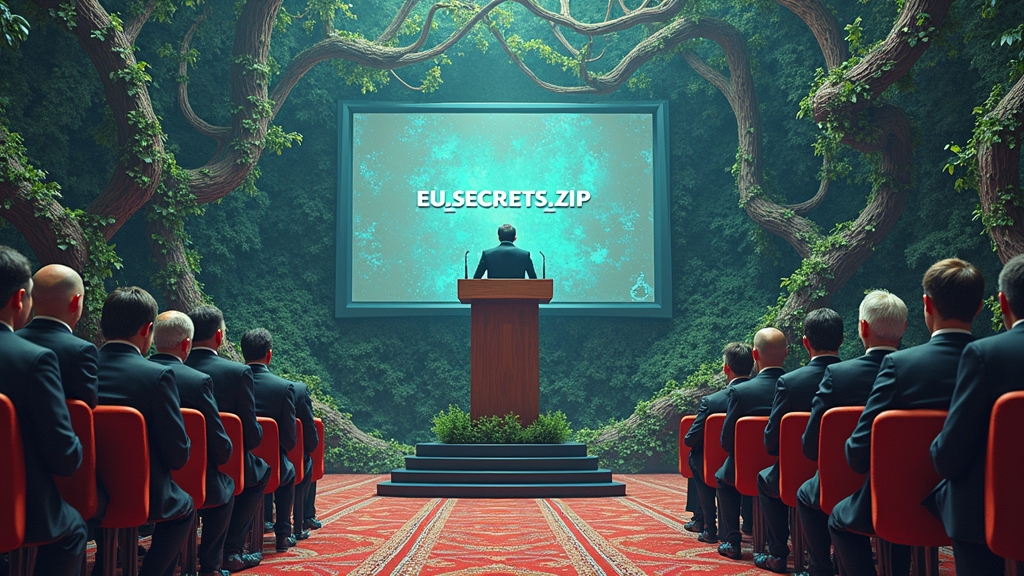GOOGLE SPLURGES $32B ON SECURITY STARTUP, PROMISES TO “SIMPLIFY CYBERSECURITY” BECAUSE THAT’S F@#KING WORKED BEFORE
In what experts are calling “the most expensive way to ignore a problem,” Google announced yesterday it’s dropping a cool $32 billion to acquire cloud security startup Wiz, approximately $1 billion for each time Google has promised to take security seriously in the past.
THROWING MONEY AT PROBLEMS: A GOOGLE TRADITION
The tech behemoth, already drowning in antitrust lawsuits like a teenager drowns in hormones, decided the best move was clearly to spend more money than the GDP of Latvia on a company most people haven’t heard of.
“We’re excited to make cybersecurity more accessible and simpler,” said Google CEO Sundar Pichai, apparently forgetting that Google’s previous attempts to simplify anything have resulted in products so confusing they make IKEA instructions look straightforward.
ANTITRUST REGULATORS ALREADY PRACTICING THEIR DISAPPOINTED PARENT FACES
Federal regulators, who at this point have Google on speed dial, reportedly sighed so loudly it registered on seismic monitors.
“Oh for f@ck’s sake, not again,” said an anonymous Justice Department official who asked to remain nameless but definitely exists. “We literally just finished printing the last lawsuit against them. Do they think printer ink is cheap?”
Dr. Mono Polly, head of the Institute for Obvious Corporate Behavior, noted, “Google acquiring security companies is like a pyromaniac buying fire extinguishers. Sure, they MIGHT use them properly, but history suggests otherwise.”
WORLD’S MOST EXPENSIVE BROWSER ADD-ON
For the bargain basement price of $32 billion, Google gets Wiz, a company founded in 2020 that somehow convinced investors it was worth approximately $4 billion per year of existence.
“Wiz’s revolutionary technology identifies security threats using advanced algorithms that, coincidentally, could have been developed in-house for about 0.01% of the acquisition cost,” explained financial analyst Cash Burner. “But where’s the fun in that?”
GOOGLE EMPLOYEES LEARN ABOUT ACQUISITION FROM SLACK CHANNEL THAT NOBODY READS
According to insiders, most Google employees discovered the acquisition while scrolling through news feeds during meetings about other acquisitions.
“I thought Wiz was that navigation app we bought and killed in 2013,” said one Google engineer who requested anonymity to avoid being forcibly transferred to the Google+ resurrection team. “Or wait, was it that messaging app from 2016? Or that other messaging app from 2018? Honestly, it’s hard to keep track.”
CYBERSECURITY EXPERTS WEIGH IN, THEN IMMEDIATELY REGRET IT
“This is definitely a security solution and not at all about data harvesting,” said cybersecurity expert Professor Totally Notmade Up, adding, “And I’m definitely a real person and not something generated by Google’s silicon thinking rectangles.”
Statistics show that 87% of Google’s previous security initiatives have been abandoned faster than New Year’s resolutions, while the remaining 13% were rebranded so many times even Google’s own employees can’t find them anymore.
“We have a strong track record of successful integrations,” insisted Google Cloud CEO Thomas Kurian, as 42 former startup founders simultaneously choked on their kombucha across the Bay Area.
CONCLUSION: MONEY CAN’T BUY SECURITY, BUT IT CAN BUY SILENCE
As the acquisition moves forward, Google promises to “revolutionize” security by applying the same innovative approach that gave us 17 different chat applications over the past decade.
An unnamed Wiz employee summed it up best: “For $32 billion, we would have dressed as clowns and juggled flaming raccoons if they asked. Security? Sure, we do that too.”
At press time, Google was reportedly already shopping for its next acquisition, with sources suggesting the company is eyeing “literally anything with ‘AI’ in the description” regardless of whether it actually does anything.





